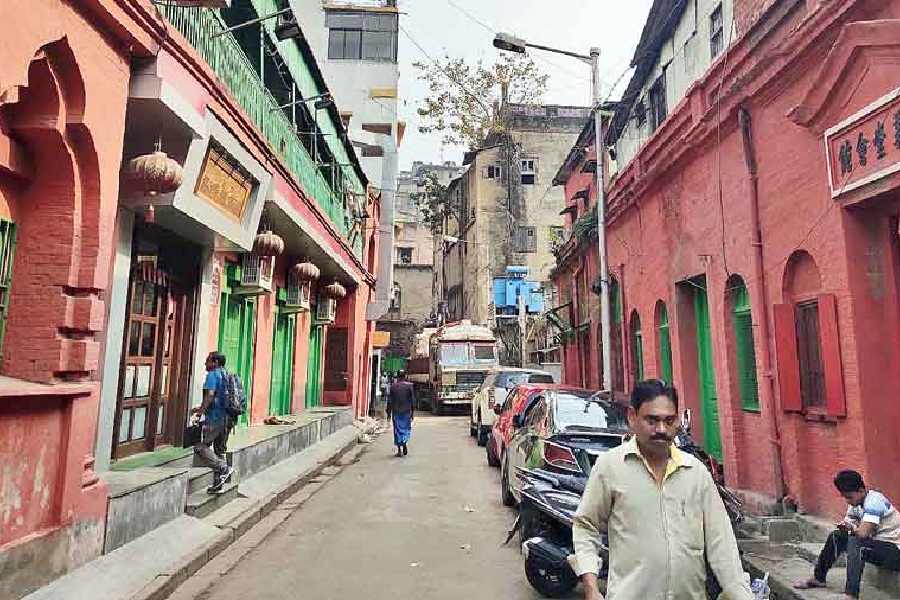The Cheenapara, which was placed on the endangered heritage watchlist of the World Monument Fund as "one of the heritage sites of extraordinary significance, facing pressing challenges” in 2022, was the subject of debate and discussion on Friday.
Detailed proposals for conservation, along with projected funds required for it, were put out by heritage architects and planners in the presence of World Monument Fund representatives, government representatives, community members and other stakeholders.
A proposal of Rs 10 crore was put forward by the Cha Project, an initiative that was taken to map the Tiretta Bazaar precinct, and proposals for urban renewal, street restoration, conservation and documentation were presented at the public talk titled Tiretta Bazaar, Challenges & Opportunities, at a city hotel on Friday.
Talking on the occasion, the executive director of WMF, Amita Baig, said: "Three years ago Sohinee Pyne sent a proposal to us about putting Tiretta Bazaar on our list. Kolkata has always been about colonial heritage. But here was a community invested in the city and very much a part of the growth of the city. We need to respect our communities and make them a part of our future. For that, we need to see how much structural reform is needed for Tiretta Bazaar."
The WMF has helped restore the roof of the Sea Ip temple.
Trinamul Rajya Sabha member and former bureaucrat Jawhar Sircar, who has written about Cheenapara, said: "I published an article on the tomb of the unknown Chinaman Yong Atchew."
He wrote: While China has sent itinerant tradesmen, peripatetic monks or scholars and curious travellers to visit India at regular intervals throughout history, it is Yong Atchew who is acknowledged as the first Chinese settler in India. The mortal remains of this first Chinaman who came here around 1780, lie beneath a sparkling scarlet horse-shoe shaped tomb on the banks of the Hooghly at Achipur, the village he founded fifteen miles south of Kolkata. Over the centuries, it has become a shrine for all Chinese of these parts to visit at least once, during the Chinese New Year. The Imperial Archives inform us that it was Governor-General Warren Hastings, who granted some 650 bighas of land at an annual rent of forty-five rupees to this pioneer from China to start a sugar plantation and a sugar-mill and also that the first 110 Chinese came here at Atchew's call to work for him.
Sircar proposed that since Cheenapara was in the middle of a bustling urban bazaar, one should set up Chinese markers in red and in Chinese script, and plaques marking the "churches" and other places of interest for tourists and others to identify the various spots of the community.
Tansen Sen, a professor of history, informed the audience that the Chinese called their temples churches during the British Raj to avoid taxation since the British would not tax churches.
Dominic Lee of Pou Chong (the shop selling Chinese condiments) spoke about how as a fourth-generation Chinese Indian it felt wonderful to know of the efforts of documentation, preservation, and revival of Cheenapara.
He reminiscenced how during the Kolkata riots, Tiretta Bazaar was a place of peace and safety. "My father himself had himself driven out a lorry parked by a Muslim in a Hindu place. We have always felt safe here," said Lee.
Rinkoo Bhowmik, founder of the Cha Project, along with Intach convenor G.M. Kapur, showed how minimal intervention like a coat of paint could do wonders to revive an area.
Conservation architects Sohinee Pyne and Kamalika Bose laid out a detailed plan for the revival of the area along with earmarked funds for each intervention.
